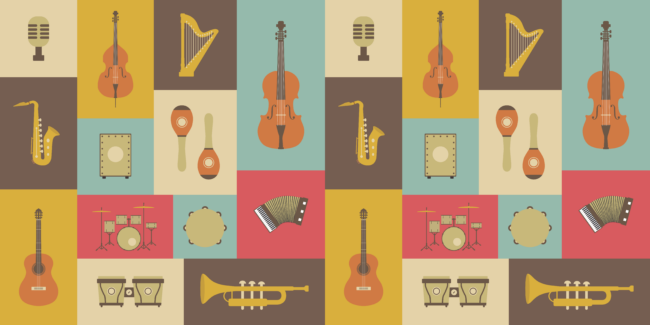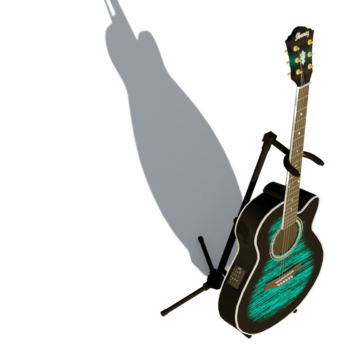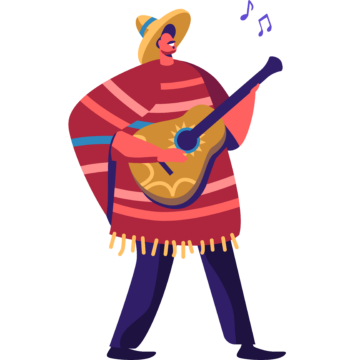How to Write Folk Songs: 5 Things to Remember

If you have a story to tell and music in your heart, you’re ready to write folk songs. Check out these pro tips to folk-alize your songwriting.
Every culture around the world has foundational stories that trickle down through generations. These stories are what we call folklore.
The elders of ancient communities would package their folklore into songs for ritual ceremonies and teaching children.
Somewhere along the way, folk transformed into a modern genre of simple storytelling in song and captured the hearts of sentimental listeners worldwide.
Leave your cynicism at the door, tap into your melancholy muse, and learn to write folk songs with these five tips.
1. Tell a real story

There is nothing abstract, experimental, or vague about folk songs. It’s cool to write metaphorical songs that break stylistic conventions and experiment with lyrics–but it ain’t folk The folky feeling is all about telling a story. A story has characters, a clear sense of time and place, and many details that carry the listener into another world.
On the other hand, the story has to have a message. After all, there is a reason why the elders would choose those specific stories to join the folklore canon.
Sometimes starting from the message can help you understand which elements of the story are most important to include. Perhaps you even want to combine a few different stories into one song because of their shared mutual message.
So don’t get stuck on explaining the meaning behind the story. Your folk songs become a preachy sermon or diary if you do.
Make the story the focus–the characters and their world. This will leave the song wide open for listeners to find their own interpretation.
Here is an example of a verse with too much message and not enough story:
And when he looked at me
I felt alone and insecure
Wanted so badly just to prove myself
But when I try to speak, I lose myself
And here is an example of the same verse, with just the right amount of details to make the story and the characters come alive:
And when he looked at her
She looked away
For there was something lonely in his gaze
When he said hello
She blinked three times, tried to swallow
And her search for words became a maze.
2. Create an authentic voice
In traditional folk songs, the singer was usually the story’s narrator. These days you can integrate yourself as a character in the narratives and still consider them folk songs.
Being the narrator is a strong choice because it gives you a clear distance from the story. This helps your listeners trust you and surrender to the journey. Watch out for any judgment or bias in the narrator’s voice, which could distort the purity of the storytelling. Keep it neutral and descriptive, and paint the emotions with pictures.

There are more traps to fall into if you choose to be a character in the story. You need to find a way to share the narrative through your eyes without making it all about you. Whatever personal perspective you choose to share should be in service of the message you are trying to convey–the one which made you tell this story in the first place. Channel your humility, and remember who you’re singing for.
A tip that always works is making yourself a secondary character in the narrative rather than the protagonist. This gives you the relatability and intimacy of telling the story from within but enough space from the main action to make you an honest narrator.
Check out So You Wanna Be a Songwriter for some helpful exercises.
3. Just the right amount of cliche
Folk songs give you full permission to describe iconically human moments, moments that pull on your heartstrings in ways that you probably wouldn’t admit to the cool kids at school.
Allow yourself to explore the themes that have haunted humanity since the beginning of time: death, love, freedom, longing, and loss.
Folk music isn’t everybody’s cup of tea, and that’s cool. But for those who dig it, there is a deep healing and comfort which comes from being given the space and opportunity to feel these aspects of life.
After all–how do you think a cliche became a cliche? Because for generations, they rang so true that people couldn’t stop saying them.
Don’t push your luck, though. There is still such a thing as over the top, even in folk. Make sure you’re not using cliches as a cop-out for finding something genuine and original to say, but that you intentionally choose to express those ideas because they move your mind and heart.
An excellent way to avoid cliches–say what you mean in clean and simple language.
Here is an example of a distasteful, excessive cliche:
The clock was ticking
The road was long and winding
And they told me, “don’t look back”
But the spell she cast was binding.
And this is an example of a cliche with more nuance and simplicity:
It felt like time was running
With so much still ahead of me
And they whispered “don’t look back”
But she weaved her words and threaded me.

4. Keep the music simple
A cornerstone of folk music is its simplicity and accessibility. A listener should be able to sing the song back to you, and beginner musicians should feel comfortable attempting to play it themselves.
Still, be expressive and creative without unnecessarily complicating things. You could try taking a four-chord progression such as I–IV–iv–V as your starting point and improvising your lyrics.
If moments don’t feel right, then see if more complex harmonic movements are the missing ingredient. When writing the melody, think about creating colorful and interesting shapes but still using just the right amount of repetition to make it sink in.
5. Be inspired
Perhaps most importantly, make sure you have some folk idols to look up to, immerse yourselves in, and learn from. There’s no better way to learn to tell a story than to listen to one. Here is a list of some of the greatest folk songwriters and their iconic songs:

- Joni Mitchell – Little Green
- John Martyn – Spencer the Rover
- Bob Dylan – Like a Rolling Stone
- Leonard Cohen – Hallelujah
- James Taylor – Carolina in My Mind
- Joan Baez – The Night they Drove Old Dixie Down









